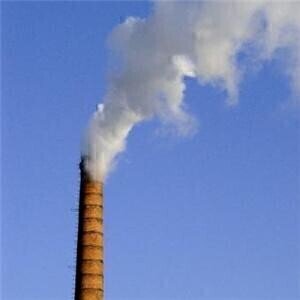Air Monitoring
What is the Best Available Technique (BAT)?
Oct 17 2014
The best available technique (BAT), sometimes referred to as “the best available technology” or “the best practicable means”, refers to the standard of methods employed by industrial companies to limit the emissions of harmful chemicals into the atmosphere. These pollution limitations are decreed by law and are an attempt to curb the damage done to the environment, which can manifest itself not only on-site and in the surrounding area, but also in the condition of the environment as a whole.
However, as a term, BAT is somewhat slippery and difficult for authorities to enforce, as has been evidenced in the case of Aberthaw Power Station in the UK. More on the specifics of that particular case can be read about in this paper from Friends of the Earth, which highlighted concerns and sought to make a clearer distinction in what BAT actually means.
What does BAT mean?
The document, undersigned by Lesley James, endeavoured to clarify the definition of the term by breaking it up into its composite parts:
(a) “techniques” includes both the technology used and the way in which the installation is designed, built, maintained, operated and decommissioned;
(b) “available” techniques means those developed on a scale which allows implementation in the relevant industrial sector, under economically and
technically viable conditions, taking into consideration the costs and advantages, whether or not the techniques are used or produced inside the
Member State in question, as long as they are reasonably accessible to the operator;
(c) “best” means most effective in achieving a high general level of protection of the environment as a whole
The document also offered a six-step guideline for how best to arrive at the appropriate BAT for any given situation. These steps were:
1) Research and identify all of the available techniques for minimising pollution emissions
2) Assess how many resources each will consume and also how many emissions each will produce
3) Extrapolate from this information the effect on the environment of each method
4) See which technique offers best protection for the global environment
5) Estimate expense involved in implementing each method
6) Evaluate which is the BAT, based on budget restrictions
Though, in theory, BAT would mean the technique which confers the least harmful effects on the environment, regardless of budget, we can see from step six that in practice, the financial aspects cannot be ignored.
Therefore, the cost of the equipment, installation methods and maintenance and upkeep of any given method must be assessed before reaching a decision. This is to ensure that a business is not penalised for not being economically capable of employing the most environmentally-friendly practice.
For specifics on the type of equipment, suppliers, data collection methods and support availability throughout the process, please see the article Improving Environmental Safety Through Responsible Monitoring.
Digital Edition
IET 34.2 March 2024
April 2024
Gas Detection - Biogas batch fermentation system for laboratory use with automatic gas analysis in real time Water/Wastewater - Upcycling sensors for sustainable nature management - Prist...
View all digital editions
Events
Apr 24 2024 Jakarta, Indonesia
Apr 24 2024 Sao Paulo, Brasil
Apr 30 2024 Melbourne, Australia
Apr 30 2024 Birmingham, UK
May 03 2024 Seoul, South Korea


















